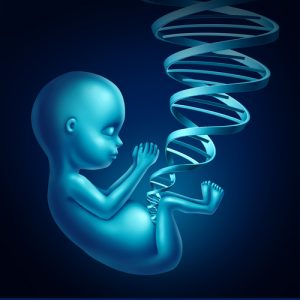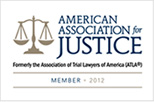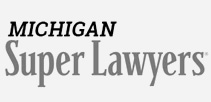Michigan Nuchal Cord Birth Injury Lawyer
 What is Nuchal Cord?
What is Nuchal Cord?
A nuchal cord occurs when the umbilical cord is wrapped around a baby’s neck. This occurs in around one-third of all babies born.
What Causes a Nuchal Cord?
There are specific contributing factors for the formation of a nuchal cord, but in some instances it is completely random. As a pregnancy progresses, the likelihood of a nuchal cord increases. Other risk factors include:
- Baby is large for his or her gestational age.
- Mother is carrying more than one baby.
- Umbilical cord is longer than average.
- Excess of amniotic fluid surrounds the baby.
- Baby is in an abnormal position.
What are the Effects of a Nuchal Cord?
Nuchal cords are common, and most babies are delivered unharmed. But when the cord is tight around the neck, injuries are possible. The main effect of a nuchal cord is birth asphyxia, which is a lack of oxygen flow to the infant that can lead to brain injuries. Other possible effects include:
- Cord Compression: The umbilical cord is flattened by pressure. Compression means oxygen, blood flow, and nutrients can be cut off from the baby, putting him or her at risk for brain damage, heart abnormalities, poor physical development, or the need for an emergency C-section.
- Cord Prolapse: The umbilical cord slips through the cervix and into the birth canal before the baby. Prolapse can result in hydramnios (accumulation of amniotic fluid), breech delivery, or premature delivery.
- Placenta Previa: The umbilical cord is trapped between the fetus and the opening of the birth canal. Placenta previa can result in a torn umbilical cord and fatality.
How Can a Nuchal Cord be Treated?
Upon discovering a nuchal cord, the doctor acts quickly to prevent cord compression during delivery. The method for treatment depends on how tightly the cord is wrapped around the child’s neck. When the cord is looser, it can easily be slipped over the head. If it is wrapped too tight, the doctor can slip the cord over the shoulders. If neither of these techniques is possible, the physician may decide to use the somersault method: the shoulders and body are born in a somersault, and the cord is unwrapped as the baby is being delivered. In extreme cases, the cord will be cut before the shoulders are delivered to make sure the baby gets sufficient oxygen.
Each method requires knowledge and precision on the part of the medical staff. If the staff fails to appropriately monitor or treat mother and baby during labor and delivery, a nuchal cord can have severe consequences.
Contact an Attorney for Birth Injuries
If your baby was injured due to improper handling of a nuchal cord, the physician and staff you trusted with your baby’s care should be held responsible. Thurswell Law can represent you and get the monetary compensation you deserve. You will pay no fee unless you collect. Call us today for a free consultation – (248) 354-2222.




